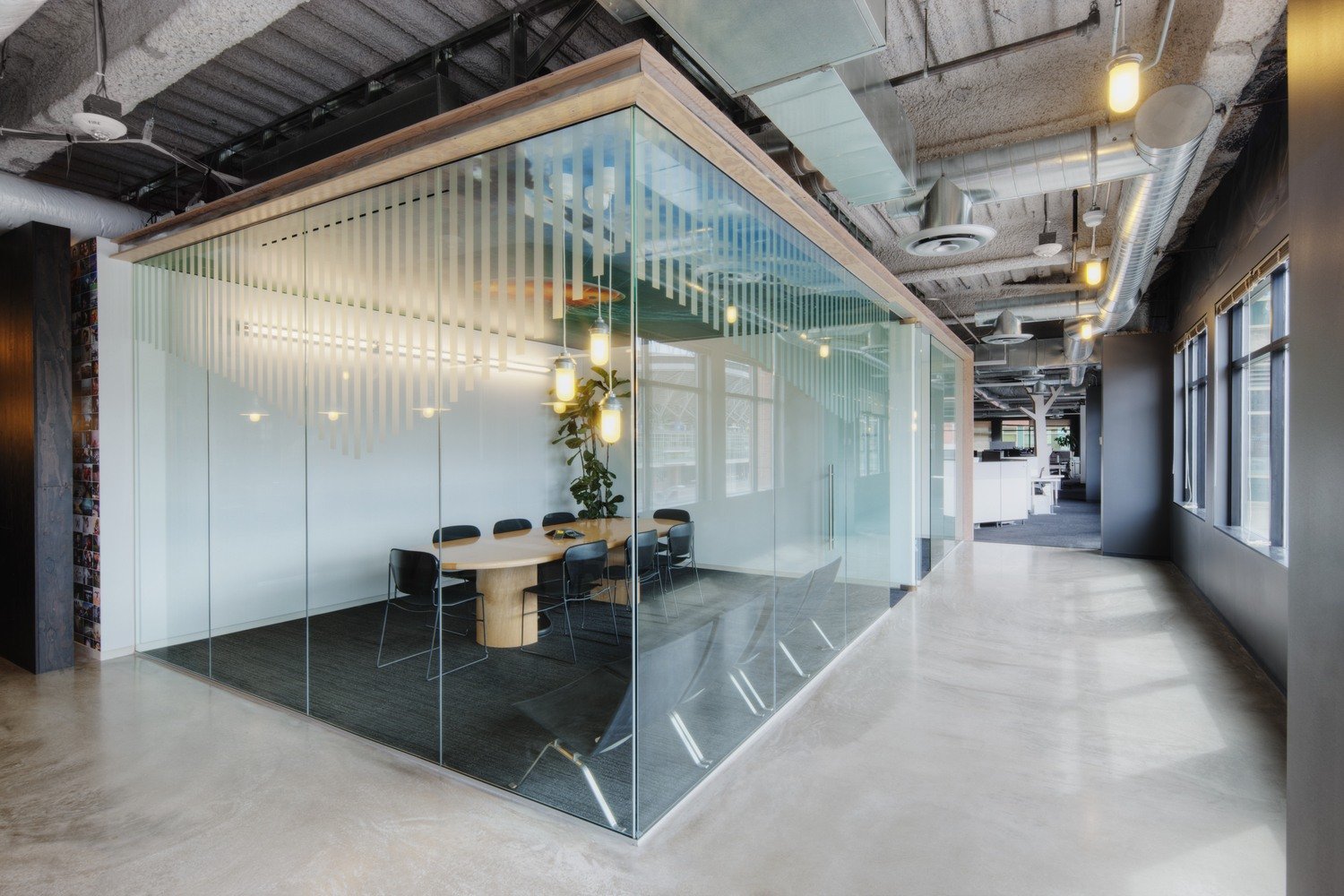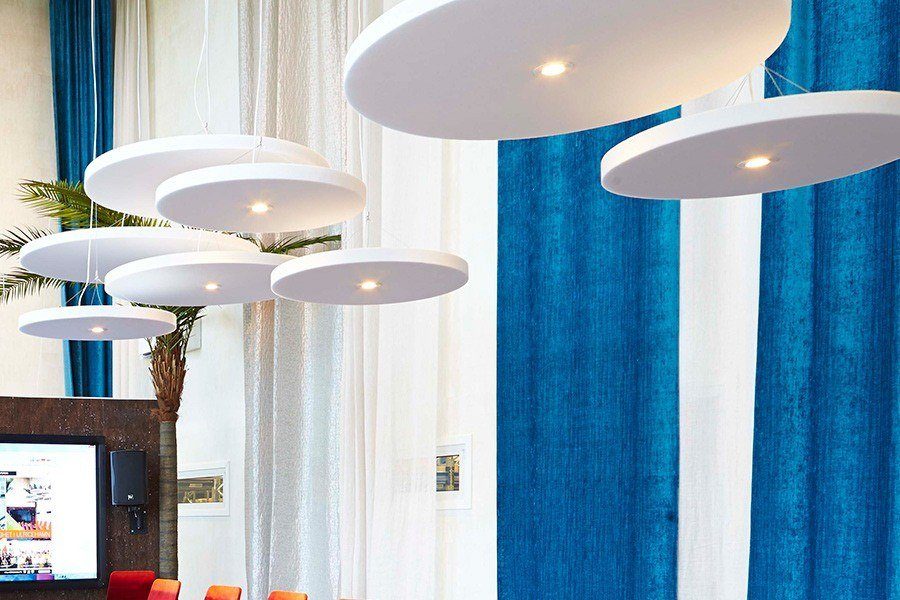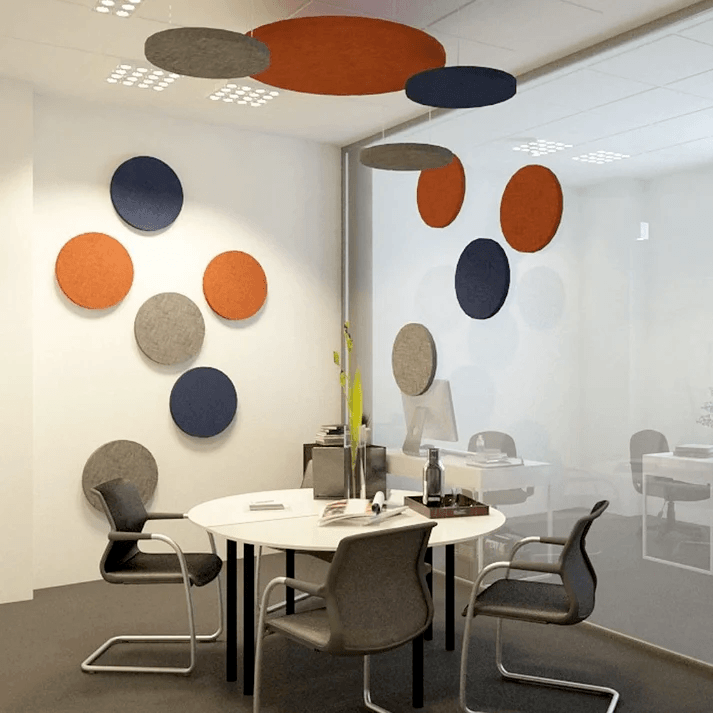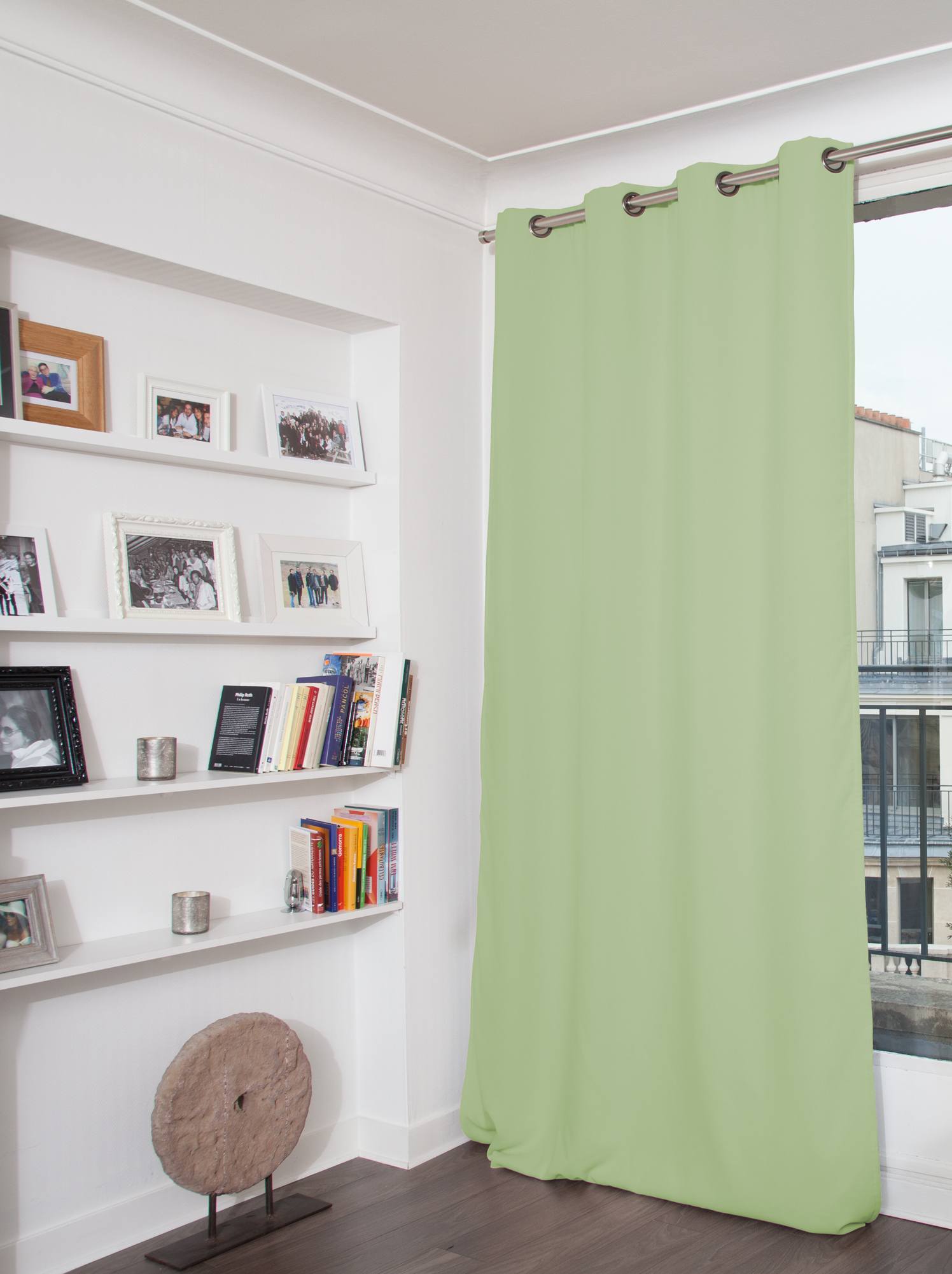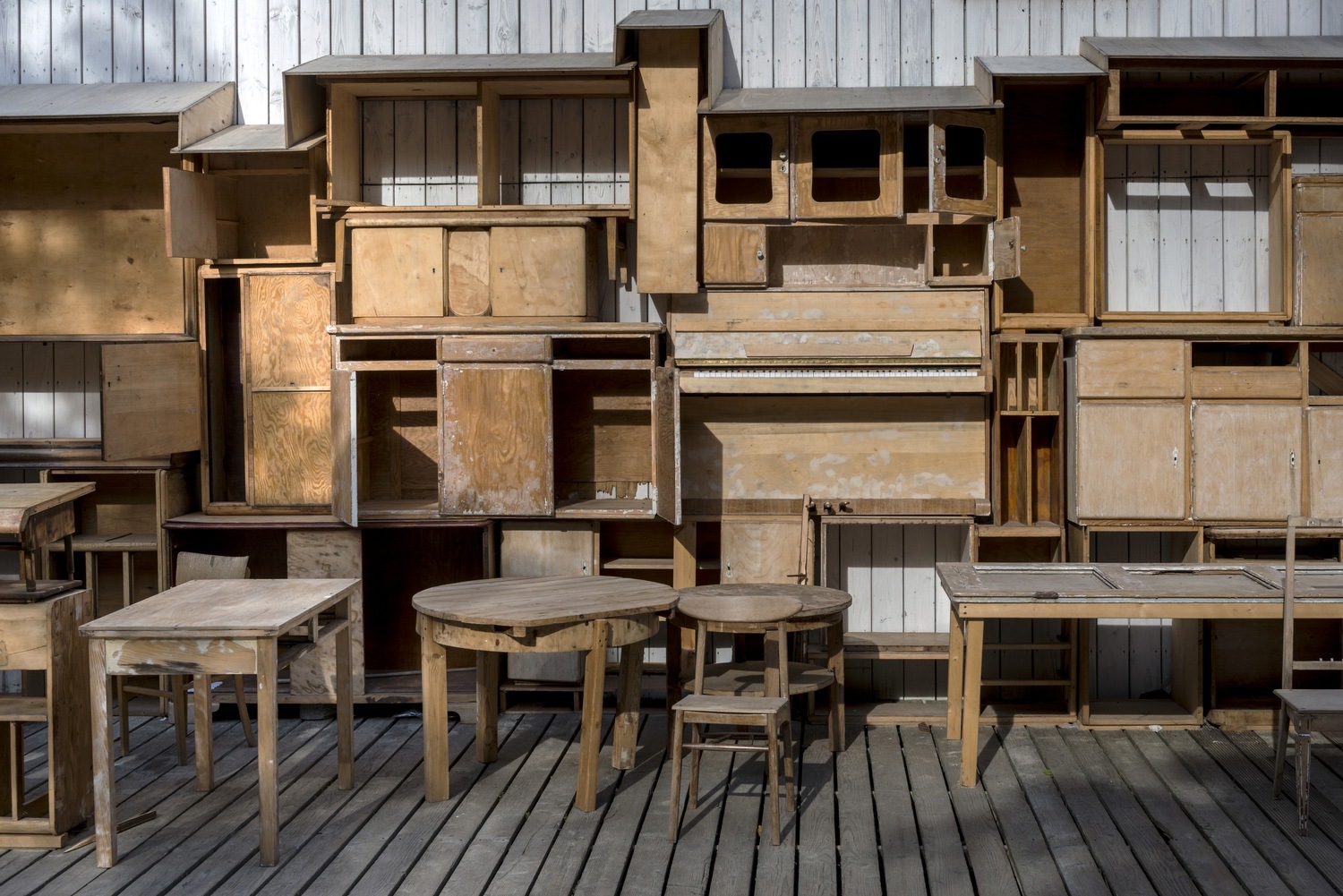Other tips for reducing noise in rooms with lots of glass surfaces
Rooms with large glass surfaces often pose acoustic challenges, as glass reflects sound and can prolong reverberation. Sound bounces between surfaces and creates an echoing effect, which can make conversations and other sound experiences unpleasant and difficult to perceive. By using a combination of sound-absorbing measures and smart interior design, you can effectively reduce sound reflections and create a more pleasant sound environment.
Sound-absorbing suspended ceilings – reduce ceiling height for better acoustics
Installing a sound-absorbing suspended ceiling is one of the most effective measures for reducing reverberation in rooms with large glass surfaces. By lowering the ceiling height and using sound-absorbing materials, you can break the free movement of sound waves and significantly improve the acoustics. Sound-absorbing suspended ceilings often consist of materials such as mineral wool, glass wool, or specially treated acoustic panels. These materials absorb sound instead of reflecting it, which reduces echo and creates a calmer atmosphere. Suspended ceilings are often used in offices, schools, theaters, and other public environments where acoustic comfort is important, but can also be implemented in home environments to create a better sound experience.
Furniture – break up sound waves through strategic placement
By placing furniture strategically in the room, you can break up the movement of sound and reduce reverberation. Large, soft furniture such as sofas, armchairs, and bookcases act as natural sound absorbers by preventing sound waves from bouncing between glass surfaces and other hard materials. Using heavy and thick textiles in the interior design, such as thick carpets, curtains, and drapes, can also help absorb sound and reduce reflections. Curtains that extend from the ceiling to the floor are particularly effective near windows.
Humidity – an often overlooked factor in the sound environment
Humidity affects the behavior of sound in a room. Dry air causes sound waves to travel faster and bounce more, while a more balanced humidity level can help absorb sound better. Using a humidifier in rooms with a lot of glass can therefore be a complementary solution to reduce reverberation and improve acoustics.
Noise protection for technology – reduce disturbing noise from electronics
Technical devices such as computers, printers, and ventilation systems can generate unwanted background noise. Placing these devices in sound-absorbing cabinets or using noise protection around machines can significantly reduce disturbing noise in work and home environments. An effective solution is to use SilentDirect Egg, a sound absorber with a self-adhesive backing that can be applied to or around technical devices to reduce noise. This can be particularly useful in open-plan offices or open spaces where several electronic devices are in operation at the same time.
Plants – natural sound absorption and aesthetic improvement
Placing plants strategically in the room can help absorb sound and reduce reflections from glass surfaces. Plants with dense and fluffy foliage, such as large leaves or bushy plants, act as natural sound absorbers. Plants can be placed along glass walls, in corners, or as room dividers to contribute to better acoustics and a pleasant environment.
Acoustic plasterboard and textured surfaces
Replacing regular plasterboard with acoustic plasterboard is another method of improving sound absorption in walls. These specially treated boards are designed to reduce sound reflections and work well in combination with other sound-absorbing solutions. Textured surfaces, such as perforated panels or angled acoustic panels, can also break up sound waves and reduce unwanted reflections. By using such surfaces in combination with soft materials, you can create more balanced acoustics in the room.
Flooring – an important part of the sound environment
Hard floor surfaces, such as tile, concrete, and parquet, reflect sound and contribute to reverberation. Using sound-absorbing flooring materials, such as wall-to-wall carpeting or floor tiles with acoustic properties, can help reduce sound reflections from the floor. Even small rugs under tables and chairs can make a big difference in the sound environment.
Furniture with sound-absorbing properties
Some furniture has built-in sound-absorbing materials, such as chairs and sofas with sound-absorbing upholstery or acoustic panels integrated into the design. This furniture can be particularly useful in environments where sound control is a priority, such as conference rooms and open-plan offices.
Sound diffusers – spread the sound for more natural acoustics
Sound diffusers complement sound absorbers and help to scatter sound waves rather than absorb them completely. Diffusers can be mounted on walls and ceilings to prevent sound from reflecting in one direction, creating a more natural soundscape and reducing the feeling of a "dead" sound environment.
Zoning – create separate sound environments in large rooms
In larger rooms, zoning can be an effective solution for reducing sound propagation. By using room dividers, bookshelves, or other furniture, you can create different acoustic zones, which can be particularly useful in offices and public environments.
Soundproof windows – reduce noise from outside
Glass can not only reflect sound indoors, but also let in sound from outside. By using soundproof windows, you can reduce the impact of traffic noise and other external disturbances, creating a more controlled sound environment.
Balanced acoustics in rooms with glass surfaces
Combining several of these measures is the most effective way to create a comfortable sound environment in rooms with a lot of glass. Because glass has high reflectivity, it can be difficult to completely eliminate sound reflections, but by using a combination of sound-absorbing and sound-diffusing solutions, their impact can be drastically reduced.
The balance between aesthetics and function is crucial. By implementing sound-absorbing measures in a well-thought-out manner, you can improve both the acoustics and the visual appearance of the room, whether it is a home environment, office, or public space.





